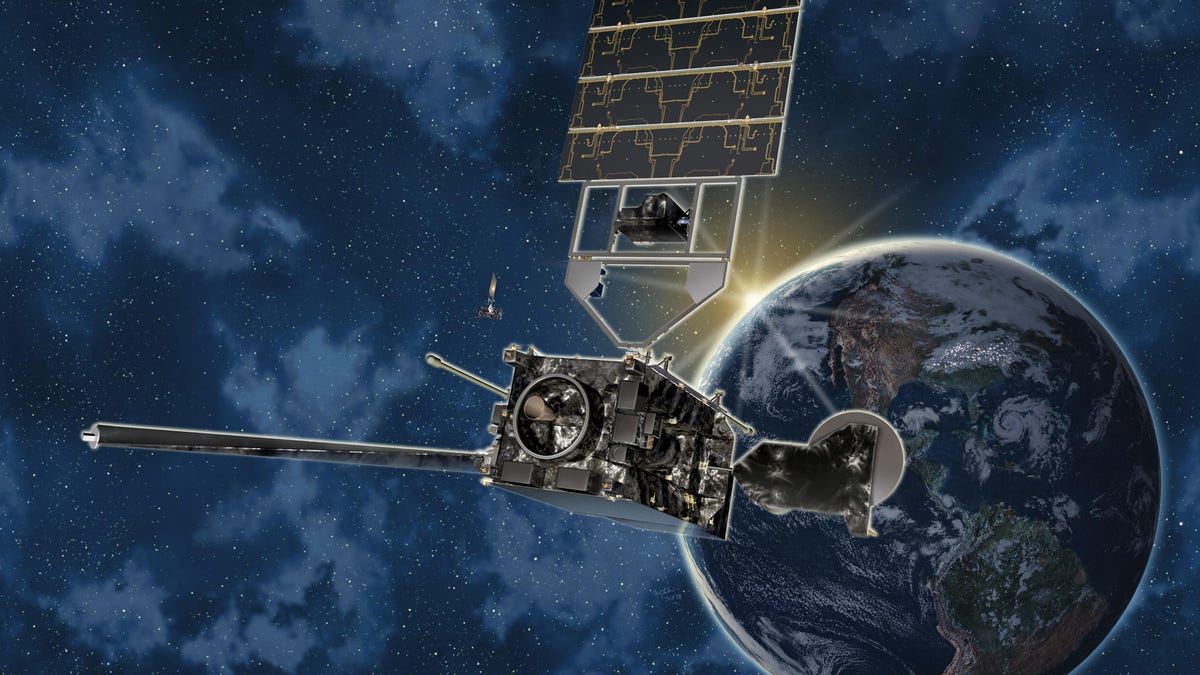Weird signals from nearby star probably weren't from there
The news from the star Ross 128, some 11 light-years away, turns out to be no news at all. Sorry, alien hunters, the signal was coming from closer to home.

The source of weird signals from space was probably something like this.
When scientists at Arecibo, the world's largest operating radio telescope, picked up unexplained and peculiar signals from nearby star Ross 128 earlier this year, they asked experts at the SETI Institute and the SETI Berkeley Research Center at the University of California to join them in taking a second listen. That happened this week, and analysis of all the data is now complete.
On Friday, Abel Mendez, a professor at the University of Puerto Rico at Arecibo's Planetary Habitability Laboratory, announced that his team is confident about the source of the "Weird! Signal." Spoiler alert: They're not saying it's aliens.
"The best explanation is that the signals are transmissions from one or more geostationary satellites," Mendez wrote in a release. "This explains why the signals were within the satellite's frequencies and only appeared and persisted in Ross 128; the star is close to the celestial equator where many geostationary satellites are placed."
Mendez added that the satellite explanation doesn't fully account for the weirdness of the signal (which shows up in the figure below as diagonal lines).
"It is possible that multiple reflections caused these distortions, but we will need more time to explore this and other possibilities."
The Weird! Signal from Ross 128 as detected in May 2017 (enclosed in the red frame).
The Breakthrough Listen collaborative, which includes scientists from the SETI Institute and SETI Berkeley, used the Green Bank Telescope in West Virginia to target Ross 128 at the same time Mendez's team was tuned in via the Arecibo Observatory in Puerto Rico this week. The Breakthrough Listen team put out a short paper (PDF) explaining that interference from satellites in geosynchronous orbit was the most likely of the possible explanations.
They do note that the limited duration of their observations makes it impossible to rule out the possibility that there's some kind of intermittent signal coming from Ross 128 that would "require substantial follow-up to confirm."
But this is really just a reminder that it's very difficult to prove a negative, i.e., it's easier to confirm there's a signal coming from a certain star system than to declare there definitely isn't such a signal, especially when we know a signal like that would take at least 11 years to reach us.
In other words: Sorry folks, there's no real reason to think it's aliens.
If you don't believe the scientists, though, you can always check for yourself. Breakthrough Listen invites the public to independently check out the the data from the Green Bank Telescope, which is in filterbank format (here's a tutorial for working with the files).
Crowd Control: A crowdsourced science fiction novel written by CNET readers.
Solving for XX: The tech industry seeks to overcome outdated ideas about "women in tech."

